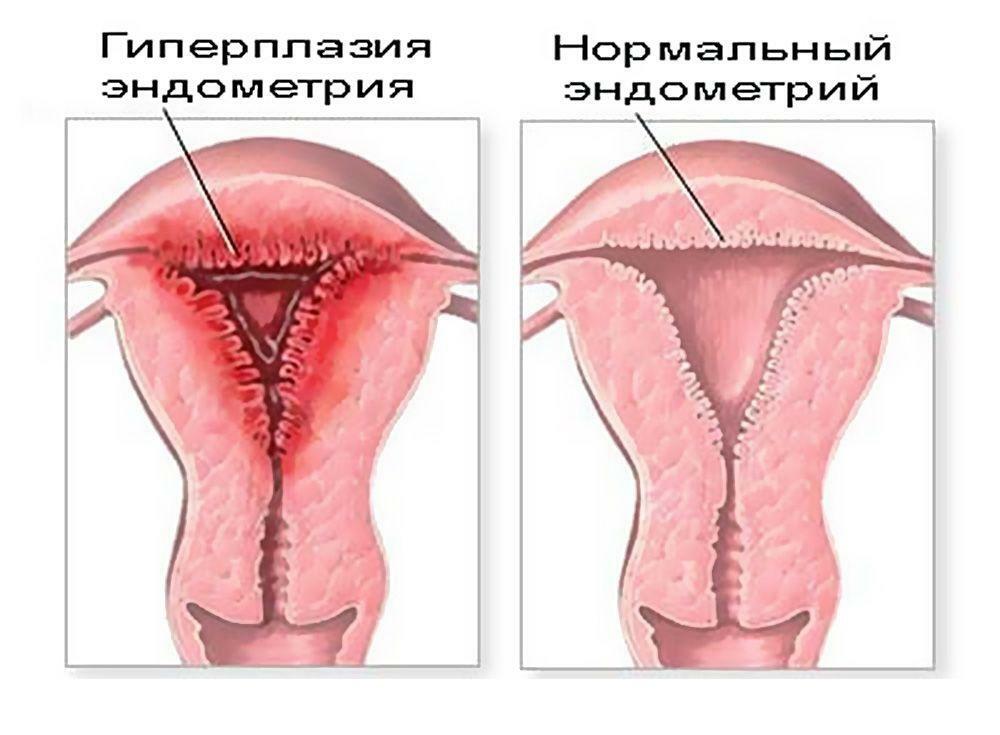Vaginal dysbacteriosis( bacterial vaginosis) is a violation of the normal microflora of the genital organs and an increase in the number of pathogenic microorganisms on the mucous membranes of the vagina. Most often, the growth of harmful bacteria contributes to infectious diseases, improper nutrition( for example, inadequate consumption of fermented milk products), bad habits. Long-term use of antibacterial drugs also disrupts the balance of microorganisms, causing the death of beneficial bacteria.
Dysbacteriosis of the vagina can occur in acute or chronic form. Chronic type of disease can not be determined without special examination, since it has virtually no symptoms. Specific signs of a woman notices only when the pathology worsens, and the colonies of pathogenic microorganisms begin to grow rapidly, causing various sexual infections. If you contact a specialist in a timely manner and undergo a course of treatment with probiotic drugs, negative health effects can be avoided, so it is important to know the symptoms of the disease and be able to recognize negative symptoms.

Dysbacteriosis in gynecology: symptoms
Content of material
- 1 Diagnostic features of
- 2 How acute vaginal dysbacteriosis manifests: symptoms
- 2.1 Allocations
- 2.2 Itching and burning
- 2.3 Pain in the lower abdomen
- 2.4 Temperature rise
- 2.5 Change in skin color in the groin area
- 3 How to distinguish chronic dysbiosis?
- 3.1 Dryness of the perineum
- 3.2 Discomfort during intercourse
- 3.3 Menstrual irregularity
- 3.4 Weakness and increased fatigue
- 3.5 Video - Vaginal dysbacteriosis
Diagnostic features of
To detect abnormalities in the balance of the vaginal microflora, a woman needs to give a smearon the flora. He is taken by a gynecologist during an examination on a gynecological chair. If any pathological changes are revealed by the results of the study, the patient will be treated, including vaginal sanitation, topical application of ointments and gels, and the use of lacto- and bifidobacteria to restore the sour-milk environment.
During the exacerbation of the disease the doctor can determine bacterial vaginosis even during the examination of the woman, since the symptomatology in this case will be quite pronounced. But even in this case, the patient must pass an analysis of urine and blood and a smear for bacterial culture, since for the purpose of proper treatment it is necessary to identify which bacteria predominate in the vaginal environment. Some drugs effectively cope with Gram-negative microorganisms, and their application to Gram-positive bacteria will be ineffective, therefore, no need to pass the study.

What is vaginal dysbacteriosis
In order for the result of the test to be as reliable as possible, it is necessary to properly prepare for the analysis. For this it is necessary:
- on the day of visit to the gynecologist to wash without the use of detergents( it is advisable not to use flavored toilet paper and sanitary napkins with the addition of flavorings);
- on the eve of the study, stop taking antibacterial drugs( consult a doctor, as some drugs can not be discontinued);
- for knocking prior to analysis do not use spicy, smoked, fatty foods;
- for 3-4 days to abandon frequent washing( it is better to use warm water without soap during this period) and douching.
Important! In the absence of treatment, bacterial vaginosis can cause sexual infections, inflammatory diseases of the urinary system and genital organs, so it is important to know the signs and symptoms of pathology in order to take the necessary measures in time.

Diagnosis for vaginal dysbiosis
How acute vaginal dysbacteriosis manifests: symptoms of
Symptomatic of bacterial vaginosis directly depends on the stage of the pathological process. The acute period is characterized by intense symptoms, which cause considerable discomfort and unpleasant sensations; therefore, it is impossible not to notice signs of malfunctions in the body's work in this case.
Allocations
Allocations from the vaginal tracts are the main feature by which you can assess the woman's health status. Normally, they should be unaffiliated, without the unpleasant odor and impregnations. According to the consistency, normal secretions resemble slime and have a clear or cream color. The increase in the amount of mucus released is normal only during the period of ovulation, when there is an intensive production of hormones. In the rest of the day, the daily volume of excreta should not exceed one tablespoon.
If the microflora of the vagina is disturbed, there is an active growth of pathogenic bacteria that secrete toxins that have a characteristic odor. The smell of secretion changes: it becomes more abrupt, resembles rotten fish or sour milk. The color of pathological excretions can vary from yellow to green, sometimes there is a white color with characteristic curdled impregnations.

Causes of Vaginal Flaw Violation
Symptomatic of discharge depends on the type of pathogenic bacteria that live on the mucous membrane. For example, the causative agent of gonorrhea causes purulent discharge of a yellow-green or brown hue with a putrid odor. When the mushrooms are affected by a white highlight, they may resemble a curd with a sour smell.
| Normal discharge | Discharge excretion | |
|---|---|---|
| Color | Transparent or milky cream | White, milky, beige, yellow, green, brown |
| Consistency | Slime( resembles egg white hen) | Thick, curd |
| Smell | Slight, sour-milk | Putrefactive,smell of rotten fish, sour milk |
| Quantity | No more than 1 tablespoon per day | Can reach 2-4 tablespoons per day |
| Associated symptoms | None( except for the ovaw periodyatsii) | itching, burning, irritation of the skin in the perineum and genitals, redness |
Important! If the consistency, color and odor of the vaginal discharge has changed, it is necessary to contact the district gynecologist, as during normal functioning of the reproductive system such signs do not appear. If there are droplets or blood veins on the linen( if this does not happen during the period of menstruation), it is not necessary to postpone the trip to the hospital - this may indicate a serious inflammatory process.

Additional causes of vaginal microflora disorders
Itching and burning
The most common sign of bacterial vaginosis is itching on the mucous membranes of the labia and in the vaginal area. Burning can be short-term and have a small intensity, and can not stop for several days in a row, not letting you practice the usual things. At the same time, redness of the inguinal zone caused by the growth of pathogenic flora and bacterial activity is observed.
Important! With severe itching, the formation of microscopic abrasions and cracks in the skin and mucous membranes, which are the "entry" for pathogenic microorganisms, can inevitably lead to secondary infection. Some women make the big mistake, trying to get rid of itching with the help of local symptomatic means. Without destroying the cause, the dysbacteriosis will pass to the chronic stage and will be aggravated under the influence of any negative factors( for example, weakening of immunity after the catarrhal diseases).

Symptoms of flora disorders
Abdominal pains
If bacterial vaginosis has painful sensations in the lower abdomen, this may be a sign of the onset of inflammatory processes. Most often, the infection affects the organs of the urinary system: the kidneys, the bladder, the urethra. The pain can also give back and buttocks in the lower back, sometimes unpleasant sensations arise in the region of the coccyx and sacrum. Pain syndrome is usually of a pulling nature, but with secondary infection, sharp and stitching pain can occur.
Temperature rise
Frequent vaginal dysbacteriosis occurs against a background of a slight increase in temperature. This is because useful microorganisms try to fight the pathogenic flora, which causes an increase in the level to 37.0-37.5 °.If at this stage the woman does not take any measures, the pathology will pass to the chronic stage, and the temperature will be normalized, which will lead to a false improvement in well-being.

Complications of dysbacteriosis
Skin discoloration in the groin area
Severe irritation with bacterial vaginosis is often accompanied by a violation of the blood supply to the genital organs, which is manifested by a slight blueness and the appearance of a dark maroon shade on the labia and perineum. This symptom can indicate not only the dysbacteriosis of the vagina, but also other abnormalities in the functioning of the organs of the reproductive and reproductive systems, therefore it is impossible to diagnose pathology only on this basis.
How to distinguish chronic dysbacteriosis?
Despite the almost asymptomatic course, the chronic form of vaginal dysbiosis also has certain signs and symptoms. In ordinary life, a woman does not pay attention to them, although it is these "alarming bells" that should become a cause for concern and appeal to a specialist.
Dryness in the perineal region
When a vaginal microflora is disturbed, the amount of milk bacteria that inhabit the mucous membranes of the vagina and genitalia is significantly reduced. It is lactobacillus responsible for the formation of lactic acid in the intimate zone of women, so any fluctuations adversely affect the condition of mucous membranes.

Prevention of infringement of the vaginal microflora
Increased dryness of the skin in the perineal zone can cause a number of infectious and inflammatory diseases of the genitourinary system, for example:
- glomerulonephritis;
- pyelonephritis;
- cystitis;
- urethritis, etc.
If the treatment is not started and delayed with a visit to the gynecologist, the listed diseases can also go to the chronic stage, which is difficult to treat because of the development of a stable immunity to antibiotics in bacterial microorganisms.
Discomfort during intercourse
Insufficient number of beneficial bacteria negatively affects the woman's intimate life, because sexual intercourse, instead of the expected pleasure, gives only unpleasant sensations and even pain. Several factors influence this:
- excessive dryness of the vagina;
- insufficient amount of secretion( lubricant) during excitation;
- skin damage resulting from permanent scratching.

Vaginal microflora
Even if external manifestations of vaginosis are absent, pain can appear in the abdomen and lower back. With neglected forms of dysbiosis, any active partner movements give a woman a painful sensation. This is a dangerous sign that indicates the possible development of a latent inflammatory process, therefore, an appeal to a specialist in this situation is necessary to exclude more serious pathologies.
Disorder of the menstrual cycle
This is a rare enough sign, but you can not completely exclude it. With chronic vaginosis, the cyclicity of the menstrual cycle may be disrupted, the secretions themselves become more abundant and may have an unpleasant smell( not very strong).Any symptoms of acute dysbiosis during menstruation intensify or appear for the first time, therefore, with frequent burning and itching during this period, it is also necessary to undergo a complete examination.
Weakness and fatigue
These signs are found in every second woman with a chronic disorder of the vaginal microflora, but few people take these symptoms seriously and turn to the hospital about this. If the pathology is in a neglected stage, a woman may have:
- mood swings;
- drowsiness;
- headache;
- worsening of well-being;
- nausea( regardless of food or time of day);
- vomiting( rarely).

Infringement of the microflora of the vagina
The most common pathology at this stage occurs without any symptoms at all, so the only way to get reliable data about your health is to pass an analysis for bacterial culture of the vaginal microflora, which must be done at least once a year. With long-term administration of medications( especially antibacterial action), random change of sexual partners and other negative factors to do a smear and undergo a prophylactic examination should be once every six months.

Treatment of vaginal dysbiosis
In some countries, dysbacteriosis is not considered a disease at all and can not be cured in any way. Now more and more doctors are inclined to the inadmissibility of this approach, since the neglected forms of bacterial vaginosis can lead to severe consequences, including infertility and disruption in the work of the most important body systems. Women's health is very vulnerable, so rely only on yourself and your common sense. Even with the highest workload, it is necessary to allocate time for examination - this will help in time to identify existing deviations and maintain health.



